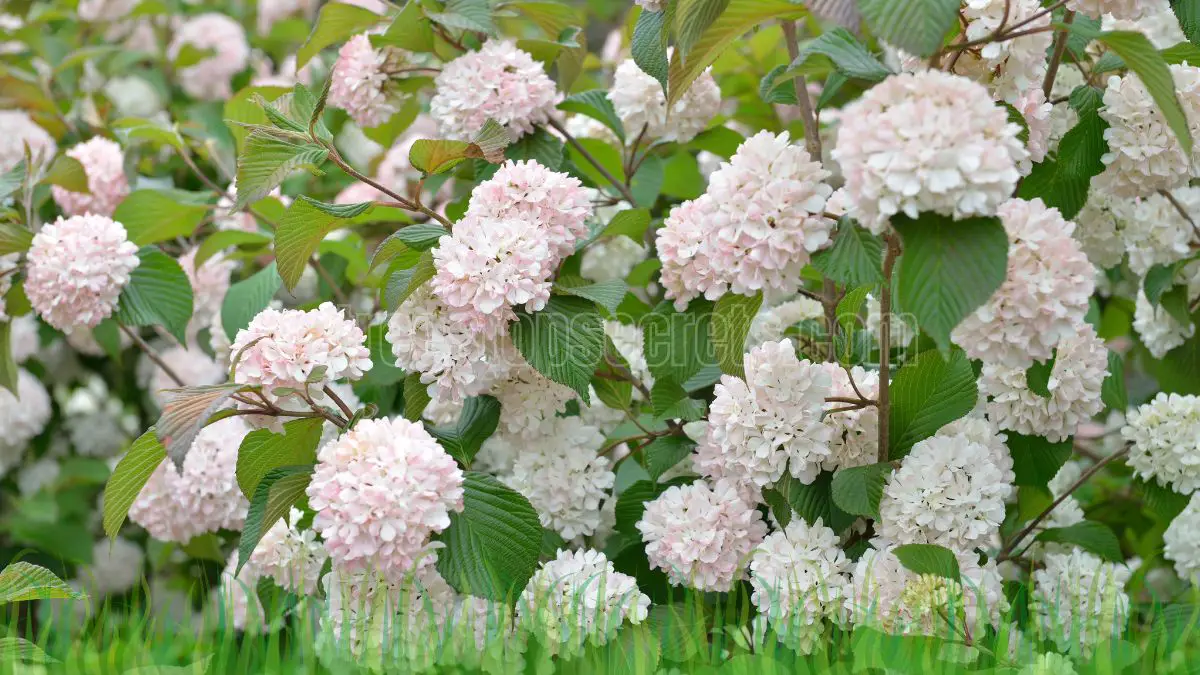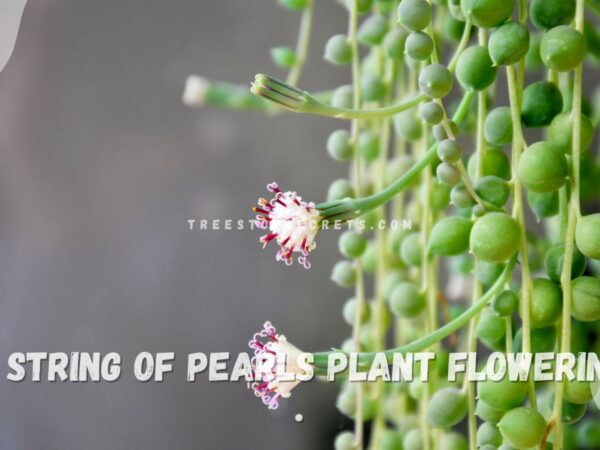Pruning your viburnum at the right time is essential for promoting growth and maintaining its natural beauty. Whether you're looking to shape your plant or encourage more blooms, knowing when to prune can make a significant difference. In this guide, we’ll cover the ideal times for pruning viburnum and offer tips to ensure your plant stays healthy and vibrant all year round.
Viburnum should be pruned immediately after flowering in late spring or early summer. This timing allows the plant to recover and set buds for next season's blooms. For evergreen varieties, light pruning can also be done in late winter. Proper timing ensures healthier growth and maximizes flower production, keeping your viburnum looking its best.
Ready to get your viburnum looking its best? Stick with us to discover simple pruning tips that will keep your garden thriving. Don’t worry—whether you're a seasoned gardener or just starting out, we’ll guide you step by step. Let’s make pruning easy and fun!
Understanding Pruning Needs
While the thought of mucking around with my Viburnum might seem like a task for the green-thumbed elite, letting it run wild won't win any garden beauty contests. So, learning its habits and gearing up with the right tools saves not only my plants but also my peace of mind.
Seasonal Growth Patterns
Getting wise to my Viburnum's seasonal shenanigans is like picking up the dance steps to a complicated number—it makes those pruning moves smoother. Each season has its routine, like my great-aunt at the family dance-offs, affecting how and when I get my clippers out. I've noticed that snipping branches in late winter or early spring before the plant’s doing its growth spurt is prime time for most Viburnum types. Cut it right, and my garden doesn’t just survive—it thrives, rocking the blooms, berries, or that autumn kaleidoscope look. Doublefile Viburnum’s like the diva of the group in this regard, needing that VIP treatment (Greg, Away to Garden).
| Season | Pruning Time You Should Consider | Why It Works |
|---|---|---|
| Late Winter | Before the Viburnum gets busy | Ideal for most Viburnum types |
| Spring | After blossoms do their thing | Perfect for the early-blooming show |
| Summer | A little haircut if necessary | Keep it cute without going overboard |
| Fall | Just a nip here and there | Getting ready for plant hibernation |
Needed Tools for Pruning
Walking into pruning my Blue Muffin Viburnum without tools is like trying to cook Thanksgiving dinner without a spatula—messy and regrettable. I've got a few favorites I rely on to make the whole task less daunting and more satisfying:
- Bypass Pruners: These guys are the MVPs for those dainty jobs involving smaller branches.
- Loppers: When the heft of branches is too much for pruners, in come these bad boys to save the day.
- Hand Saw: Sometimes branches are hefty like Aunt Marge's secret fruitcake—this tool gets through the toughness.
Now, I'm all for living dangerously at times, but not with pruning. Gloves are a must, and the good old eye gear keeps bits and bobs from invading my peepers. It also does my tools a favor to give them a good sharpening and cleaning. This way, they're not just reliable but also not passing plant diseases around like gossip at the neighborhood coffee shop (Greg).
| Tool | What They Help Trim | How I Keep Them Ready |
|---|---|---|
| Bypass Pruners | Handles the smaller stuff | Regular scrubbing and blade sharpening |
| Loppers | Tackles the chunkier bits | Align and sharpen like clockwork |
| Hand Saw | Deals with the bulkier limbs | Clean thoroughly to dodge plant ailments |
Pruning Blue Muffin Viburnum
Essential Steps in Pruning
Pruning my Blue Muffin Viburnum is like giving it a makeover for the new season. I usually get to work in late winter or early spring, just before it starts sprouting new growth. This timing is key—nobody wants to chop off next season’s flowers, right? Here’s how I keep mine looking sharp and healthy:
- Take a Good Look: First, I do a quick once-over for any dead or sickly branches. It's all about spotting the troublemakers.
- Get My Gear Together: A few tools are absolute must-haves:
- Bypass pruners for all those little, sneaky branches
- Loppers for the more stubborn, beefy ones
- Hand saw for anything that looks like it belongs in a horror movie
- Out with the Old: I get rid of branches that are no longer pulling their weight.
- Make Some Space: I thin out the overcrowded bits so the plant can breathe and catch some sun. Nobody likes a stuffy Viburnum.
- Decide on the Look: I trim it down to the size and shape I like. Gotta keep it stylish!
- Tidy Up: I always clean away the clippings so they don’t hang around and cause trouble with diseases.
It’s super important to keep my tools sharp and squeaky clean to avoid spreading any plant nasties.
Deadheading for Better Blooms
Deadheading is a fancy term for making sure my Blue Muffin Viburnum isn't wasting energy on the old flowers. I do this to rev up the bloom game:
- Seek out flowers that have seen better days.
- With my trusty pruners, I snip them just above the first healthy leaves I spot.
- Regularly keeping at this task pays off—my shrub stays good-looking all season.
Deadheading makes the blooms pop, and I notice my plant looking fresher and fuller than ever. It’s like giving my Viburnum a little extra love to keep it shining in my garden.
Viburnum Variety Insights
Fragrant Flowers and Fruits
I'm really into viburnums. Their blooms always seem to have this amazing fragrance, and their colorful berries add a splash of life to my garden year-round. Depending on which type you plant, some have scents that'll just knock your socks off or fruits that burst with color. Take V. carlesii, V. x juddii, and V. burkwoodii as examples—they're the real sweethearts with aromatic flowers. Meanwhile, the V. dentatum 'Blue Muffin' has these snazzy blue berries that not only look great but also tempt local birds, turning my backyard into a wildlife hangout.
| Viburnum Variety | Notable Features |
|---|---|
| V. carlesii | Sweet-smelling blooms; gets lots of attention with its double flowering |
| V. x juddii | Great fragrance; fans of aromatics love it |
| V. burkwoodii | Packs a fragrant punch; good-lookin' foliage too |
| V. dentatum 'Blue Muffin' | Exciting blue berries; birds love 'em |
| V. nudum 'Winterthur' | Beautiful autumn colors; fruits are the cherry on top |
Disease Management for Viburnums
Nobody wants sickly plants, right? Keeping viburnums happy and healthy means staying on top of disease prevention. It's like catching a cold early—the sooner, the better. I make a habit of giving my plants the once-over now and then, just to spot any nasty leaf spots or signs of droopiness before they become a big issue. Powdery mildew? A common nemesis! A bit of space for airflow and a dab of fungicide, and problem solved.
Watering is a bit of a balance act too—enough to keep them happy, but not so much that they drown. And, let's not forget regular garden cleanup. Fallen leaves and plant debris make a nice little home for diseases and pests, so I toss them out.
Here's a rundown of what to watch out for and what to do about it:
| Disease | Symptoms | Management Strategies |
|---|---|---|
| Powdery Mildew | Leaves looking a bit dusty with white spots | Get air moving and, if needed, use a fungicide |
| Leaf Spot | Dark marks spreading on leaves | Pick off the dodgy leaves; use fungicide if it gets out of hand |
| Root Rot | Plants looking droopy and yellow | Check the drainage and ease up on the watering |
By knowing the ropes with viburnum varieties and keeping an eye out for disease, these plants can continue being the stars of my garden show—filling it with those gorgeous blooms and berries that are worth every bit of effort.
Pruning Dos and Don'ts
When it comes to pruning Viburnum, picking the right time and keeping a few things in mind is like finding a hidden gem in the garden. Trust me, you don't wanna mess this up if you want your plants to look like garden royalty! Here’s what I’ve discovered along the way.
Optimal Pruning Timing
Picking the perfect moment to get those clippers out is like timing your pizza in the oven—it's gotta be just right. Here's what I've figured out over time:
| Timing | What to Do |
|---|---|
| Early Spring | Skip pruning while the sap's running wild. Hold off till the blooms have done their thing. (Fine Gardening) |
| Late Winter to Early Spring | Best for Viburnum that blooms later in spring or summer. |
| Fall | Generally a no-go to avoid putting plants in a chilly spot. |
| Freezing Weather | Don't even think about trimming when it's under 25°F unless you enjoy plant damage. |
Pruning Considerations
Before I go all Edward Scissorhands on my Viburnum, here's what I keep in mind:
- Sap Issues: Trimming during sap flow is basically ringing the dinner bell for bugs and diseases. I usually do a tiny test cut to see if it’s sap city before going full throttle.
- Stress Alert: Going too hard on pruning right after planting or moving is like asking your plants to pull an all-nighter. Better to chill and let them settle before getting snippy.
- Weather Drama: Listen, pruning when it’s as cold as your ex's heart means brittle branches. Save yourself the hassle by waiting for the thaw. Plus, staying indoors when it's freezing isn't just good for plants, it's great for me too!
By getting the hang of these dos and don'ts, I keep my Viburnum looking fab and dodge the usual blunders. After all, they deserve to strut their stuff without any setbacks.
Care Tips for Arrowwood Viburnum
Growing Conditions and Care
If you want to make your Arrowwood Viburnum flourish, you've got to give it the right home. This tough little plant enjoys basking in full sun or hanging out in partly shady spots—just make sure it gets a good 4-6 hours of sunshine every day. With more sun, you'll get better flowers and fruit. Picture this: creamy white blooms in spring and summer, then glossy dark green leaves that paint the town red, purple, and orange in fall. It's like having a mini fireworks show in your garden year-round!
I've put together a few handy care tips to help your leafy buddy grow strong and beautiful:
| Care Element | Details |
|---|---|
| Watering | Water regularly during the first growing season to help your plant set down solid roots. Just ensure the soil drains well. |
| Fertilizing | Sprinkle on some fertilizer each year in early spring to give it a little boost. |
| Pruning | Give it a haircut after it blooms to keep it looking sharp and to chop off any dead or sad branches. |
This Viburnum champ can rise to heights of 3 to 10 feet and spread its wings up to 8 feet across. Plus, it's a breeze to take care of with hardly any fuss.
Pairing with Companion Plants
For a garden that’s easy on the eyes, consider teaming your Arrowwood Viburnum with some horticultural pals. Here are a few plant buddies that enjoy hanging out with Arrowwood Viburnum:
| Companion Plant | Benefits |
|---|---|
| Sweet Pepperbush | Draws in pollinators and adds different textures to the mix. |
| Eastern Redbud | Bursts into bloom in spring and thrives in similar lighting. |
| Hydrangea | Throws in height variety and blooms at separate times for ongoing interest. |
| Hostas | Their big ol' leaves contrast well and they love partial shade. |
Arrowwood Viburnum isn't just a looker; its berries are a bird favorite, making it a wildlife magnet. This support for local critters makes your garden a little eco-haven. By wisely picking plant neighbors, I can create a garden that's lively and nature-friendly.
Brandywine Viburnum Care Guide
Planting and Growing Tips
So, when it comes to planting Brandywine viburnum, let me tell you, it loves a good drink and plenty of sunshine—or at least partial sun. Picking the perfect spot can make all the difference. It's pretty forgiving with clay soils and doesn't mind getting its feet wet, so if you've got a soggy patch in the yard, consider it claimed. Plus, if you have an irrigation system, this plant will be more than happy.
Here's a quick cheat sheet for planting conditions and care:
| Factor | Preference |
|---|---|
| Soil Type | Moist, clay soils |
| Sunlight | Full to part sun |
| Deer Resistance | Moderate |
| Landscaping Use | Hedge, specimen, garden accent |
With just a smidge of TLC, Brandywine viburnum will be the crown jewel of your garden. Its leaves start off a handsome green, turning a knockout red-burgundy come fall—reportedly even better than the pictures on Gardening Simplified.
Visual Appeal and Landscape Use
Now, about that curb appeal. This viburnum shows off with a showy spring bloom that keeps on impressing right through summer. Those cute little green berries? They undergo a color transformation like a summer blockbuster, shifting from ivory, to peppy pink, all the way to a deep blue. It's like having a living piece of art that shifts with the seasons.
Personally, I can't get enough of Brandywine viburnum for a bunch of jobs around my garden. It's dense enough to form a privacy hedge, impressive enough to stand alone as a statement piece, and versatile enough for all sorts of decorative duties in the yard. And with moderate deer resistance, it's good news for the plants, even if Bambi takes a stroll through your garden.
Here's a quick look at its features and uses:
| Feature | Description |
|---|---|
| Bloom Time | Spring and summer |
| Berry Color Change | Ivory to bright pink to blue |
| Foliage Color Change | Green to blazing red-burgundy |
| Best Uses | Hedge, specimen, landscape charm |
In my garden, Brandywine viburnum is the MVP, delivering beauty and utility from season to season. It’s a plant worth raving about and one I genuinely cherish watching grow.
Final Thoughts on When to Prune Viburnum:
Timing is everything when it comes to pruning viburnum. By following the recommended pruning schedules, you’ll not only enhance your plant’s growth but also enjoy more vibrant flowers. Keep your viburnum healthy and thriving by pruning at the right time and giving it the care it needs to flourish year-round.
FAQs about When to Prune Viburnum:
Q: What time of year should I prune my viburnum?
A: Prune viburnum immediately after it flowers in late spring or early summer. For evergreen varieties, light pruning can also be done in late winter.
Q: Can I prune viburnum in the fall?
A: It's best to avoid pruning viburnum in the fall, as this can interfere with the plant's blooming cycle for the next season. Stick to post-flowering in spring or early summer.
Q: How much should I prune my viburnum?
A: For general maintenance, remove no more than one-third of the plant’s overall size. For shaping or rejuvenating older plants, you can prune more aggressively, but be sure to do this right after the blooming period.
Q: Will pruning viburnum increase its blooms?
A: Yes, pruning viburnum at the right time will promote healthier growth and increase blooms in the following season by allowing the plant to focus energy on new buds.
Q: Should I remove dead branches from my viburnum?
A: Yes, remove dead, damaged, or diseased branches as soon as you notice them. This keeps your plant healthy and prevents disease from spreading.
Image Source: Paid image from CANVA




